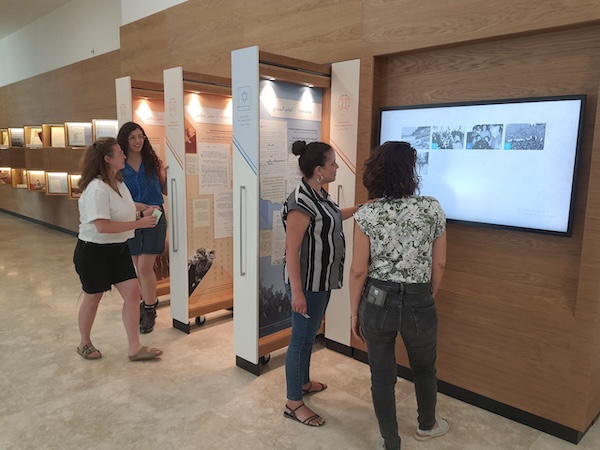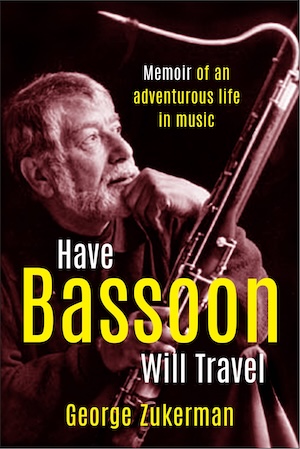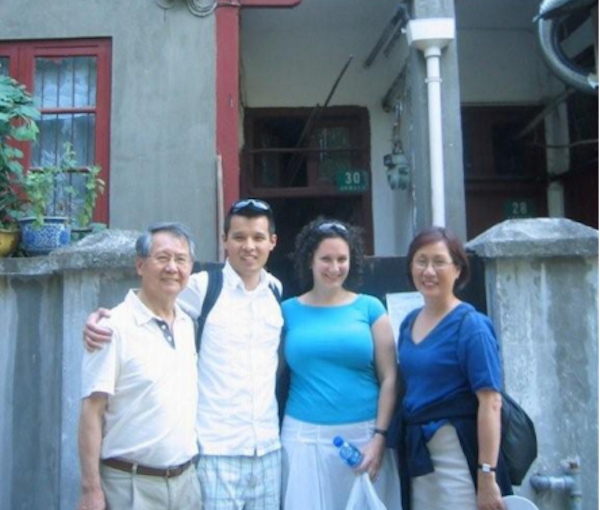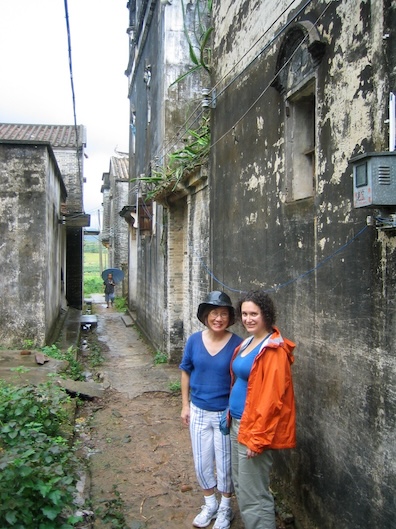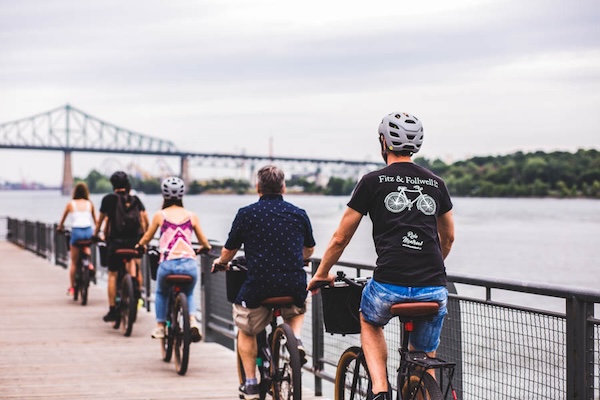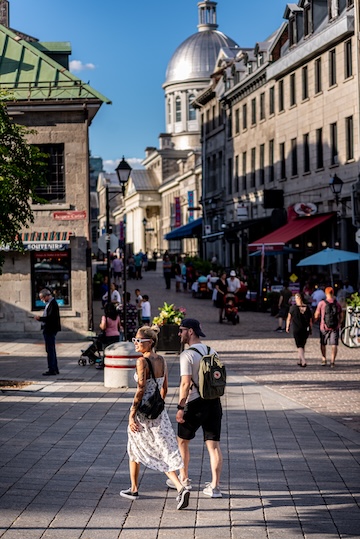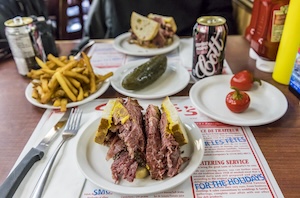Caryl Eve Dolinko, author of A Woman’s Guide to World Travel, has been to 93 countries and counting. (photo from caryldolinko.com)
Caryl Eve Dolinko’s A Woman’s Guide to World Travel literally covers everything you need to know when traveling, from choosing where to go through to reacclimatizing when you get back home. Anyone, but especially women, about to take their first international trip should have this book handy. For people who have been a few places, and even for seasoned travelers, Dolinko’s latest also has snippets of history, many short, informative travel stories, an interesting perspective – and likely at least one point you’ve not thought of before.
Dolinko, who is a member of the Vancouver Jewish community, has been exploring the world for more than 40 years. She has been to 93 countries and counting. She has journeyed on her own and with others, as a young person and as an older person, as “a working professional, a mother with kids, as a straight and gay woman, and a daughter caring for an elderly parent.”
 A Woman’s Guide to World Travel, published by Whitecap Books earlier this year, is Dolinko’s third travel book, but the first as sole author. She co-wrote both The Complete Guide to Independent Travel (self-published) and The Globetrotter’s Guide: Essential Skills for Budget Travel (Red Deer Press), with Wayne Smits. The latter was a Canadian bestseller, notes Dolinko.
A Woman’s Guide to World Travel, published by Whitecap Books earlier this year, is Dolinko’s third travel book, but the first as sole author. She co-wrote both The Complete Guide to Independent Travel (self-published) and The Globetrotter’s Guide: Essential Skills for Budget Travel (Red Deer Press), with Wayne Smits. The latter was a Canadian bestseller, notes Dolinko.
In the 25-plus years since The Globetrotter’s Guide came out, much has changed.
“The world’s population has almost doubled from over 4 billion in the early 1980s when I started to travel, to just over 8 billion today, putting a strain on finite resources,” writes Dolinko. “Many tourist attractions are now overused, overrun and exploited as a result of global tourism’s exponential growth. I believe it is past time for us to reconsider how we travel and become more aware of the impact we have.”
Her own approach to travel has changed since she started, at age 18, with a planned four-month trip to Europe that turned into “an epic eight-year odyssey.”
“When I first started traveling around the world in 1982, there was very little information available, especially for women, as very few were traveling the world alone,” she writes. “The internet didn’t exist, and neither did smartphones, digital cameras, selfies, social media, travel and hotel apps, GPS or texting. Lonely Planet was just starting to publish travel books and National Geographic was about the only magazine that showed exotic places around the world. Travel guides and literature were written with men in mind and, with so few women traveling, there was no need to address our particular issues and concerns. Only a small selection of useful advice was available to address women’s needs.”
That situation continues to change, with some studies estimating that “women are the primary decision-makers for travel in households, influencing up to 80% of all travel decisions. That’s a tremendous amount of buying power and it has influenced the tourism industry to change to meet our needs,” points out Dolinko, whose guide takes readers through some of the history leading to this development.
She briefly highlights six women “who dared to travel in their day,” starting with Ida Pfeiffer, who was born in Vienna in 1797. While Pfeiffer’s “travel stories and books inspired future generations of adventurers … her ethnocentric views frequently led her to be critical and intolerant of other cultures,” writes Dolinko. “As a result, she could be a harsh traveler, lacking the ability to appreciate other cultures on their own terms.”
Dolinko places great emphasis on what can be learned from other cultures, and stresses the importance of traveling with humility, not just for our own education, personal growth and safety, but for the benefit of the people and communities we encounter.
“Through our spending habits, we have the power to influence local economies and cultures, so it’s crucial to make informed decisions and be mindful of our impact,” she writes. “By supporting local businesses and organizations that prioritize sustainability and conservation efforts, we can make a positive difference and be a catalyst for change. Your actions have real consequences, so aim to leave a positive impact and a gentle footprint wherever you go.”
Elsewhere, she shares warnings, like “It’s strictly a cultural taboo or against the law in some cultures to be gay, and open displays of affection are discouraged”; “In some cultures, it’s expected and even considered impolite to accept the initial price offered by the seller without attempting to negotiate”; and “When communicating nonverbally, it is important to be aware of cultural differences and the meanings behind certain gestures. Pointing with your finger, for example, can be seen as rude or confrontational in many cultures.”
Dolinko spends time on photography in this context – reminding readers that some religious sites may prohibit photography, some people may not want to be on your social media feed and some cultures believe that a camera can steal a person’s soul. She talks about selfies, camera types and photo composition.
There is not a stone left unturned in A Woman’s Guide to World Travel. She covers factors to consider when deciding where to go (like safety, cultural norms and accessibility), budgeting (don’t forget admission fees, tips, snacks, SIM cards and so on), choosing luggage (suitcase vs backpack, for instance) and packing (she gives detailed lists of clothing, footwear, toiletries and medical supplies to bring, plus a host of other items to consider). She suggests where you should be in your preparedness two months out, one month out, a week before you leave and the day before you leave. She explains and lists the documents you’ll need, the insurance and vaccinations, how you should leave your home and office, and what the people you leave behind might need if something were to happen to you on your trip.
Specific to women, Dolinko talks about how to interact with men (“being aware of cultural differences that may affect communication and behaviour, as well as keeping an eye out for red flags and listening to your intuition”) and how to safely have a travel romance (with men or women), as well as what to do if, God forbid, you are sexually assaulted or raped. She lays out how to deal with some common gynecological issues while traveling. She offers advice on visiting religious buildings. She makes suggestions about traveling with kids. And she shares so much more.
To say that the 384-page A Woman’s Guide to World Travel is comprehensive is an understatement. It encompasses 40 years of experience traveling around the world, lots of photos (which I wish had been captioned, with some in colour) and relevant anecdotes. It’s a one-stop “shop” for anything you might want to know – and lots you didn’t know you needed to know – about travel.




